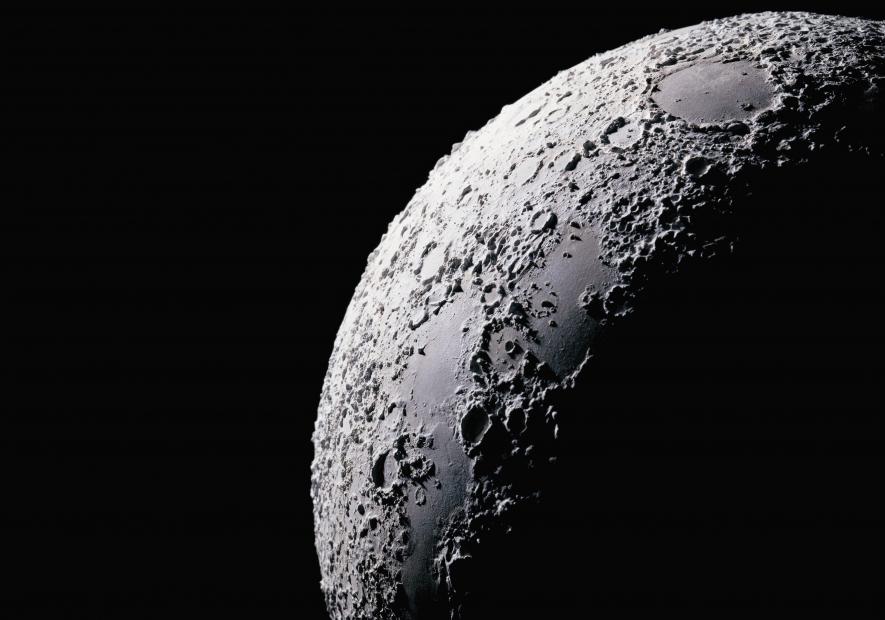Moon has been Continuously Shrinking and Cooling for Several Hundred Million Years

Image Courtesy: National Geographic Kids
The moon has been continuously shrinking for several hundred million years and this is happening as a result of the cooling of its interior —according to an analysis of the images captured by NASA’s Lunar Reconnaissance Orbiter (LRO). It has shrunk by more than 150 feet, as a result of which there is an increase in moon quakes. This is because, as the moon shrinks, its brittle surface breaks forming “thrust faults”. The thrust faults are formed when one part of the crust is pushed up over a neighbouring part. These thrust faults look like small step-shaped cliffs that are few meters high and extend over few miles.
The study of the lunar quakes was done by analysing data obtained from four seismometers placed on the moon by the Apollo astronauts—they placed the seismometers on the lunar surface during the Apollo 11, 12, 14, 15 and 16 missions. The Apollo 11 seismometer was operational only for few weeks, but the remaining four recorded 28 shallow moonquakes from 1969 to 1977. Some of the quakes were recorded to be strong enough—corresponding to magnitude 5 on Earth.
The researchers analysed the data of the seismometers with an algorithm designed in such a way that it could predict the pinpointed location of the quakes detected by a sparse seismic network. The study was published in Nature Geoscience on May 13.
Using the new algorithm, the team found that 8 of the 28 shallow quakes lie within 30 kilometres from the faults visible in the lunar images. This is significant enough to attribute the quakes to the faults. This is because, the modelling study of the scientists show that this is the distance where strong shaking could take place given the size of these faults. In addition to these, the new study shows that 6 of the 8 quakes happened when the moon was at or near the apogee. The apogee is the point that is farthest from the Earth in its orbit. At this point, the Earth also puts some additional tidal stress due to its gravity, and this causes a peak in the total stress, making slip events along the faults more likely. Additionally, they found from their massive 10,000 simulations that events like meteorite-hitting produce seismic activities different from the quakes caused by fault slip events.
Thomas Watters, the lead scientist of the Nature publication says –“Our analysis gives the first evidence that these faults are still active and likely producing moonquakes today as the Moon continues to gradually cool and shrink.” Watters is a senior scientist in the Centre for Earth and Planetary Studies at the Smithsonian’s National Air and Space Museum in Washington.
“We think it’s very likely that these eight quakes were produced by faults slipping as stress built up when the lunar crust was compressed by global contraction and tidal forces, indicating that the Apollo seismometers recorded the shrinking Moon and the Moon is still tectonically active,” he adds.
Evidences that the faults are active were also found when the analysis of the highly detailed images of the moon by NASA’s Lunar Reconnaissance Orbiter (LRO) was done. The LRO camera captured some 3,500 images of the faults. These images show that there are boulders at the bottom of bright patches on the slopes of the faults. A bright area on lunar surface indicates that the area is freshly exposed space. This happens as weathering and radiation from sun and other objects in space gradually darken material on lunar surface. So, the boulders, recently exposed to the space, are an indication of moonquakes that sent materials sliding down a cliff.
In addition to this, the scientists claim to find that the epicentre of one of the moonquakes lies just 13 kilometres from the Lee-Lincoln fault scarp travelled by the Apollo 17 astronauts. The astronauts also examined boulders on the slope of North Massif that was near to where the astronauts landed. They also found a large landslide on South Massif that covered the south part of the Lee-Lincoln scarp. This provides further evidence of moonquakes due to thrust faults. The north and south Massif are the Lunar Mountains that make the lunar valley named Taurus-Littrow. The Apollo 17 made a landing at this valley. The Lee-Lincoln scarp is a low ridge or step that is about 80 metres high and expands north-south through Taurus-Littrow valley.
Get the latest reports & analysis with people's perspective on Protests, movements & deep analytical videos, discussions of the current affairs in your Telegram app. Subscribe to NewsClick's Telegram channel & get Real-Time updates on stories, as they get published on our website.
















